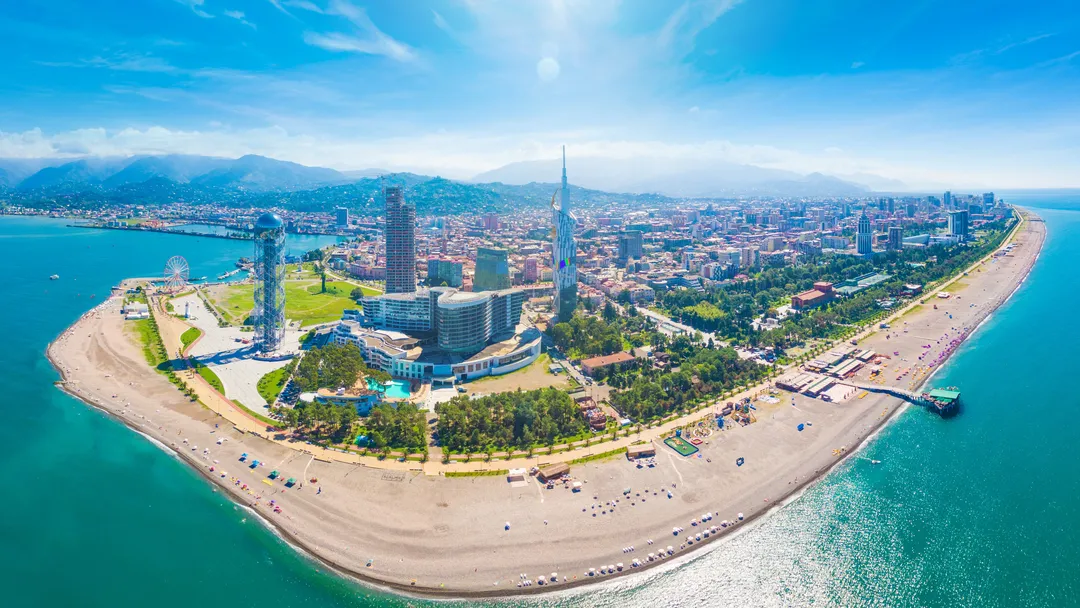Oguz Kaan Kısa · Feb. 10, 2021

Georgia is still an unknown place to many. Those who have come to Georgia remember the country's charm, beauty and hospitality. Situated in the middle of Europe and Asia, this small country occupies many places among ancient cities, UNESCO World Heritage Sites, snowy mountains, lush nature and delicious wines. And if you're among those who haven't visited this jewel of the Caucasus, here are some interesting facts you should know.
Georgians call their country Sakartvelo. Although it is not known where the country's English name came from, there is a theory that could explain it. St. George is believed to be the patron saint of Georgia and hence the name may have been carried out by Christian reformers in the Middle Ages.
An archaeological discovery at Dmanisi found the oldest human skulls in the Caucasus and suggested that a man from Africa traveled to Europe via Georgia. The 1.8 million-year-old skulls are the remains of a few Georgian people named Zezva and Mzia. Undoubtedly, Georgia is the homeland of the first European.
Georgia has been producing wine for at least 8,000 years and is considered the birthplace of this drink. The production of wine was accidental. Grape juice is poured into a shallow pit and buried in the ground, turning it into wine. UNESCO listed the traditional Georgian method of winemaking. Qvevri - List of Intangible Cultural Heritage of Humanity.
Among the 14 unique languages of the world is the Georgian language and its own alphabet. The Georgian alphabet was three different languages in its existence - Nuskhuri, Asomtavruli and Mkhedruli. The one that Georgians use today is the second one and has 33 letters.
Georgia has 12 different climate zones, from subtropical to alpine and semi-deserts, and has 49 soil types. This makes Georgia one of the most ecologically diverse countries in the world. Additionally, many of the most exciting animals such as leopards, lynxes, and bears are found in the country's dense forests.
There are three cultural centers that are listed as UNESCO's World Heritage sites: an ancient city and its former capital Mtskheta, the enormous cathedral complex Gelati Monastery and the mountainous area of Upper Svaneti, 15 other sites are on a tentative list.
Bochorna and Ushguli villages are Europe's highest permanent settlements at altitudes of 2,345 and 2,100 meters above sea level, respectively. Both are mountainous regions where the summer is short and the winter is snowy and airy.
"Chakrulo", a Georgian folk song often sung at festivals and celebrations, was sent into space on the spacecraft Voyager. The Golden Record has 116 images, different natural sounds, traditional music from various countries and speech in 59 languages, one of which is Chakrulo.
Mtskheta and Kutaisi, both former capitals of Georgia, are among the 16 oldest cities in Europe. Located in western Georgia, Kutaisi was the capital of the Kingdom of Colchis, the ancient region of the southern Caucasus where people lived in the second millennium BC. Compared to Kutaisi, Mtskheta is not old and was founded 3,000 years ago.
Georgia is known for its choral folk music, which attracted UNESCO's attention, which was listed on the 2008 Intangible Cultural Heritage of Humanity. There are three different types of polyphony: the complex common in Svaneti contrasted with polyphonic dialogue on a bass background known in eastern Georgia and a common three-piece improvised piece in the west.
The Jewish community in Georgia is one of the oldest communities in the world. It was divided into two groups - Georgian Jews lived here for 2,600 years, while Ashkenazi Jews arrived in the 19th century.
Gorgeous views, and wide open slopes make Georgia's ski resort Gudauri a perfect destination for paragliding and skiing lovers. Gudauri is a promising ski resort without the crowd of other European resorts. And even if you're not an adrenaline junkie, Gudauri still offers great slopes for skiers and snowboarders.

 Back
BackLet us find your dream university.
